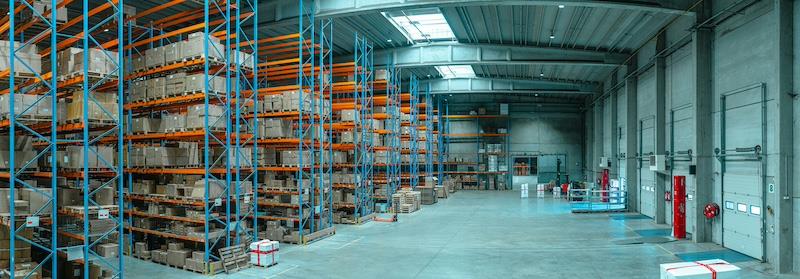
Streamlining Supply Chain Automation With Integration Platforms Robotics & Automation News
Supply chain management has evolved in complexity in today's fast changing technology environment. The need for flawless integration of several systems has grown as businesses try to meet the demand for faster, more effective procedures.
Here is where Integration Platform as a Service (iPaaS) plays a transformative role. iPaaS helps companies to automate their supply chain operations by connecting robotic systems, ERP software, and logistics platforms, thus improving efficiency and lowering operational expenses.
The Growing Complexity of Modern Supply ChainsModern supply chains are more complex than ever since companies depend on several technologies and systems to control everything from distribution to inventories.
Real-time supply chain visibility across these systems is difficult, though, since many of them run in silos. Delays, mistakes, and more expenses can all result from this fragmentation.
Companies using iPaaS solutions to close the gaps between their different platforms are addressing these issues. Using iPaaS helps companies to easily combine their ERP systems, robotic automation systems , and logistics management systems, thus facilitating better data flow and more effective processes.
Leveraging iPaaS to Connect Robotic Systems and ERP SoftwareOne of the primary advantages of iPaaS is the ability to integrate robotic systems with enterprise resource planning (ERP) software . In a highly automated warehouse, for instance, commodities are picked, packed, and transported using robots.
These robotic operations might lack the required synchronizing ability to maximize inventory levels, order processing, and fulfillment without appropriate integration with the ERP system, though.
Companies can link their robotics gear straight with their ERP systems via iPaaS, therefore enabling real-time data interchange.
Based on current inventory levels, client orders, and manufacturing schedules, this integration helps robots receive immediate instructions. Businesses can thus maximize general supply chain efficiency, minimize stockouts, and fulfill orders faster.
Enhancing Logistics Platforms for Real-Time VisibilityLogistics management is also absolutely vital for supply chain automation. Coordinating transportation, tracking cargo, and optimizing delivery routes all depend on logistics platforms.
To provide end-to-end visibility, these technologies must, however, also interact effortlessly with other systems including ERP systems and warehouse management tools.
By automating the data flow between their logistics systems and other systems using iPaaS, businesses can reduce errors and save human data entry.
The logistics platform can, for example, immediately update the ERP system with tracking data, inventory levels, and delivery schedules when a shipment leaves the warehouse. Real-time visibility lets companies better predict delays, streamline delivery routes, and base decisions on accurate data.
Automating Data Flow Across the Supply ChainSupply chain data has historically been compartmentalized into several systems, which makes it challenging for companies to have an overall view of their activities. Using iPaaS helps businesses to unify their data sources, therefore supporting automated processes and more effective supply chain management.
iPaaS, for instance, helps IoT devices used in smart warehouses integrate with one another.
Real-time data collection on inventory levels, equipment performance, and environmental variables among these devices allows for When coupled with an ERP system via iPaaS, this data may be examined to optimize stock levels, forecast maintenance requirements, and reduce waste.
The outcome is a more flexible and responsive supply chain capable of rapidly adjusting to changes in demand and supply.
The Future of Supply Chain AutomationAdvanced integration solutions like iPaaS will only become more necessary as supply chains evolve. Companies trying to stay competitive in a world becoming more and more digital will rely critically on the capacity to link and automate many systems.
Using iPaaS can help companies improve their agility, streamline their processes, and have a more resilient supply chain.
iPaaS has demonstrated its ability to revolutionize the automation of the supply chain. iPaaS lets companies maximize their operations, lower costs, and stay ahead of the competition by allowing flawless integration between robotic systems, ERP software, and logistics platforms.
Supply chain efficiency and automation should develop much further as more businesses embrace this technology.
Legal Disclaimer:
MENAFN provides the
information “as is” without warranty of any kind. We do not accept
any responsibility or liability for the accuracy, content, images,
videos, licenses, completeness, legality, or reliability of the information
contained in this article. If you have any complaints or copyright
issues related to this article, kindly contact the provider above.

















Comments
No comment